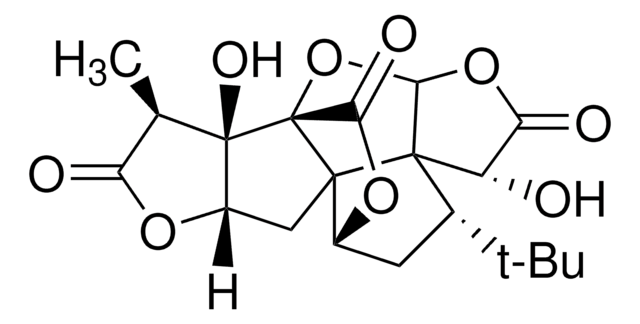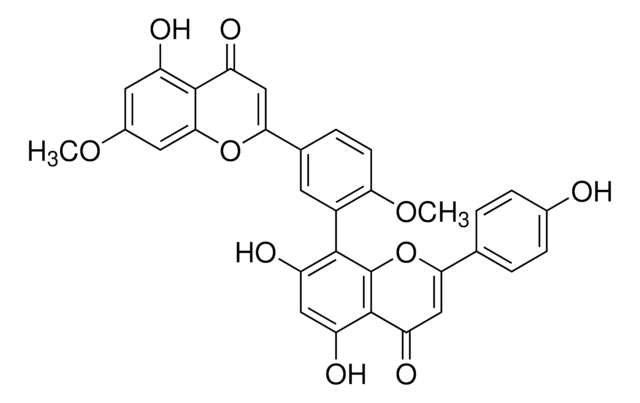G-013
Ginkgo Biloba Terpene Lactones Mix
100 μg/mL each component in acetonitrile, ampule of 1.0 mL, certified reference material, Cerilliant®
About This Item
Recommended Products
grade
certified reference material
feature
SNAP-N-SPIKE®/SNAP-N-SHOOT®
composition
Bilobalid
Ginkgolide A
Ginkgolide B
Ginkgolide C
Ginkgolide J
packaging
ampule of 1.0 mL
manufacturer/tradename
Cerilliant®
concentration
100 μg/mL each component in acetonitrile
application(s)
food and beverages
format
multi-component solution
storage temp.
−20°C
Related Categories
General description
Ginkgo biloba extract is a mixture of biologically active secondary metabolites. The main constituents are bilobalide (BB), ginkgolide A (GA), ginkgolide B (GB) and ginkgolide C (GC). Ginkgo biloba extracts include around 300 compounds, with major constituents being flavonoids and terpene lactones. Terpene lactones make up to 6% of the total extract.
Biochem/physiol Actions
Legal Information
related product
Signal Word
Danger
Hazard Statements
Precautionary Statements
Hazard Classifications
Acute Tox. 4 Dermal - Acute Tox. 4 Inhalation - Acute Tox. 4 Oral - Eye Irrit. 2 - Flam. Liq. 2
Storage Class Code
3 - Flammable liquids
WGK
WGK 2
Flash Point(F)
35.6 °F - closed cup
Flash Point(C)
2 °C - closed cup
Certificates of Analysis (COA)
Search for Certificates of Analysis (COA) by entering the products Lot/Batch Number. Lot and Batch Numbers can be found on a product’s label following the words ‘Lot’ or ‘Batch’.
Already Own This Product?
Find documentation for the products that you have recently purchased in the Document Library.
Customers Also Viewed
Our team of scientists has experience in all areas of research including Life Science, Material Science, Chemical Synthesis, Chromatography, Analytical and many others.
Contact Technical Service










